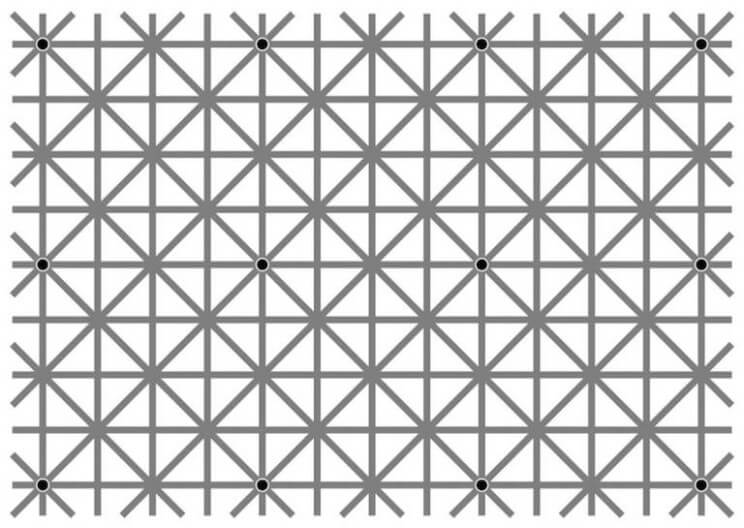
Our life is limited by how much our brain allows us to do. Light, shapes, odors, colors, everything depends on the brain and if unless it's damaged or injured, we perceive everything like other people do. Optical illusions are one way to understand how our brains work. Although they look like games, they're in fact scientific tests to help observe the human mind.
The grid optical illusion image, which recently became viral, is a good sample of an optical illusion. The image is a version of the works of Jacques Ninio on the Hermann grid as an extinction illusion. The picture originated from the page of Psychology Professor Akiyoshi Kitaoka, from Kyoto. It includes 12 dots, but our brain won't let us see all of them properly. The average person only sees four dots in the picture.
The retina is full of two types of nerve cells called rods and cones. These are capable of detecting or sensing light. Rods become more active in low light as they're responsible for sensing the low levels of light.
The drawback is the fact that they only sense black, white and shades of gray. When the light comes into the eyes, our nerve cells communicate with one another, and some of them even communicate that others can ‘sleep and rest’. That's what scientists call lateral inhibition. According to neurobiologists, that creates a contrast in stimulation which allows increased sensory perception. It's also referred to as lateral antagonism and happens primarily in visual processes.

Firstly, your brain is picking up the most apparent parts to see, and the rest of the picture needs more attention and focus to be seen. That is is mainly what is going on in this picture. By the way, your brain fills the uncompleted parts in the photo, according to the patterns your brain recognizes in the rest of it. So, the correcting capacity of the brain depends on how much information your mind can handle and store at one time.
In that image, there are twelve dots appointed in a geometrical grid base. At first sight, you'll see the four of them, but if you focus, you'll become able to see them all, as long as you don’t have a mechanical problem in your eyes or brain. Some diseases such as dyslexia cause more complex issues with processing the data and the mind complete the missing parts faster than usual.
Scientists, such as the Psychology Professor Akiyoshi Kitaoka and Jacques Ninio, are still examining visual illusions to understand the exact reasons behind them. The human brain is a micro-universe, and there are still many mysteries to solve. The only thing we all can do is have fun looking at those optical illusions.
Reference: Interesting Engineering











COMMENTS